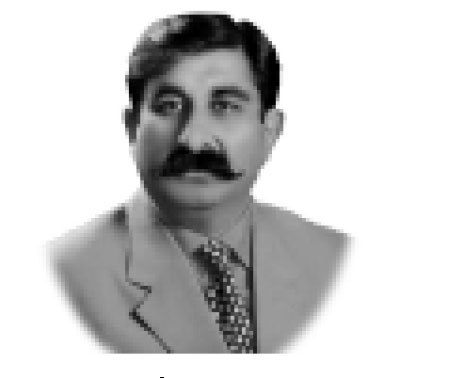NAVEED AMAN KHAN
WILL Afghanistan finally find peace? May be, if the Taliban, the Afghan government andAfghan people manage to find a compromisethatworks for all sides.Willthe dealthattheUnited States and the Taliban have apparently struck finally allow the United States to extricate itself from its longest war? Likely, if a seven-day violence reduction test can be passed, a requirement that allows the deal to be formally signed and to start being implemented. But that road to actual peace could turn out to be as long, steep and winding as the Salang Pass road. Peace may only come to fruition long after US troops have withdrawn and after much intra-Afghan fighting. The Taliban has agreed notto conductterrorist attacks againstthe United States and its Western allies, and will not allow other militants to use its territory for such attacks. Soon the Taliban will start negotiating with Afghans, including presumably the Afghan government, with which it has thus far refused to engage. That’s when the truly difficult unknowns start. Although the exact deal has yet to be disclosed, its basic parameters are known. If incidents and spoiler sabotage are averted duringthe violence-reductiontest,the U.S. will withdraw some five thousand of its twelve thousand five hundred soldiers within half a year. The rest will be pulled out gradually, perhaps over three years or less, though a limited U.S. counter terrorism force may remain. The Afghan government fervently wishes for negotiations similar to the one it conducted with warlord and Hizb-e-Islami Chief Engineer Gulbudin Hekmatyar. For years, his political party enjoyed power in the executive branch of Hamid Karzai’s presidency and in the Afghan Parliament, but Hekmatyar himself remained in exile in Iran. In 2017, the Ashraf Ghani Administration offered him amnesty and he moved to Kabul, for a while gaining political momentum. But he burned out during Afghanistan’s 2019 presidential election, becoming a spent force. TheAfghan government hopes to emulate Colombia’s peace deal with the FuerzasArmadas Revolutionaries de Colombia, or FARC. In exchange for disarming, the insurgents would mostly avoid imprisonment and will receive some reintegration help. The government and the Taliban would commit to rural development and perhaps some power devolution, while the Taliban would constitute a political party and compete in elections. These highly optimistic scenarios are unlikely. Although the Afghanistan battlefield has been stalled since 2013, the Taliban has momentum compared to the still weak and troubled Afghan forces. In Colombia, for instance, the battlefield was stalled at a much lower level of conflict, with the FARC confined to non-strategic periphery areas. Even so, Colombia’s negotiations took four years and the implementation of the peace accords has struggled, with violence intensifying in various parts of the country. Many Afghan opposition politicians, including Abdullah Abdullah and former President Hamid Karzai, envision a different model. They hope to negotiate a behind-closed-doors deal with the Taliban, perhaps rapidly bypassing President Ghani. This might include creating a joint interim government with the Taliban. In this scenario, power would be divided in Kabul and in the provinces. Many Afghan politicians believe they can outsmart the Taliban, or that at a minimum the Taliban will need their technocratic skills to govern, even if the Taliban’s rule become religious and restrictive. The Taliban may well be quite comfortable with this model, strongly preferring to make decisions about the constitutional changes it seeks only after it is in power. Only then will substantive questions be decided, such as whether a religious body or an emir runsAfghanistan, whether and what kind of elections take place, and what the social rules are, such as regarding women in public life for instance whether they could conceivably be ministers, or how veiled they must be. But Taliban-linked interlocutors did not want a demobilization of all of their fighters, nor a separate military service for them. Instead, they want their fighters integrated into the Afghan security forces. The US Congress, meanwhile, will experience sticker shock when it realizes the actual cost of peace, namely that US taxpayer dollars would go to the Taliban in the military. IfAfghanistan’s own history is a guide, the intra-Afghan negotiating and fighting could go on for years. It could easily feature unstable dealsthat easily collapse, powerful spoilers, military and political coup d’états, andtheloss ofinterest by the United States but active meddling by regional powers. Under much more auspicious conditions, the Philippine government’s negotiations with the Moro Islamic Liberation Front took more than a decade and collapsed many times. Some in the international community hope for a Nepal-like process. Years of negotiations during which a ceasefire holds, political power is shared, and minorities are empowered. The ensuing governance has remainedtroubled and unstable for a decade and a half,with street and ethnic strikes paralyzing the country. It’s been a disappointment for Nepalis, but elections have continued to take place and the Maoist ex-insurgents, when running the government, have embraced crony capitalism practices. At the end of the winding path, the Taliban will likely have substantial power. If the United States and international community cut aidtothe country because ofTaliban rule,they will severelylimittheirinfluence also onissues of pluralistic processes and women’s rights. The Afghan government and polity need to start thinking rapidly about what their redlines are for which they will fight without the United States around and what concessions they are willing to make. The United States needs to start thinking about how it will engage with the Taliban in power in some way, even though the specifics are not yet known. Looks on as US President Donald Trump shakes hands withAfghanistan PresidentAshraf Ghani during a surprise visit at BagramAir Base inAfghanistan, 28 Nov 2019.What will beAfghan future post the US -Taliban deal ?Where will Pakistan be then?Yet a dream. — The writeris book ambassador, columnist, political analyst and author of several books basedin Islamabad










